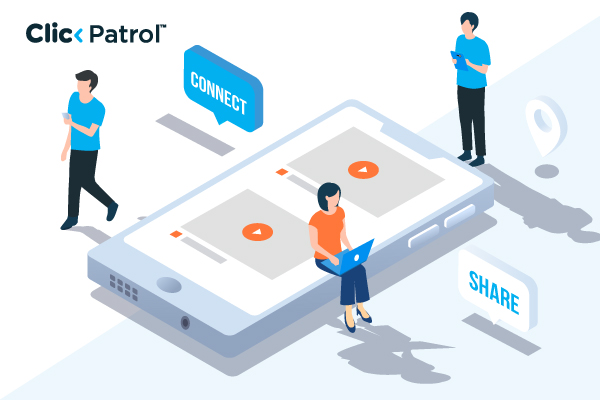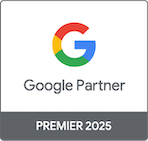
What is DV360? A complete guide to Google’s programmatic powerhouse
Abisola Tanzako | Aug 01, 2025

Table of Contents
- Understanding DV360: Google’s flagship DSP explained
- Key components of DV360
- How does DV360 work?
- Key features of DV360
- Benefits of using DV360
- DV360 vs. Google Ads: What is the difference?
- Use cases for DV360
- Challenges and considerations
- Best practices for using DV360 effectively
- Why DV360 matters: Key takeaways
- FAQs
DV360 powers over 20% of programmatic ad buys worldwide (eMarketer, 2024).
Display & Video 360 (DV360) is Google’s enterprise-level demand-side platform (DSP) that helps marketers plan, buy, and optimize programmatic campaigns across display, video, native, and CTV.
As programmatic advertising dominates digital spend, DV360 has become essential for reaching audiences at scale with data-driven precision.
This article explores DV360’s features, benefits, and role in today’s advertising landscape.
Understanding DV360: Google’s flagship DSP explained
Display & Video 360 (DV360) is an end-to-end programmatic advertising solution that allows advertisers to purchase, manage, and measure digital advertising campaigns across various formats and channels.
It is connected to the extensive Google system, such as Google Ads, YouTube, and third-party ad exchanges, to serve ads at scale to the intended audiences.
DV360 is available in the Google Marketing Platform and other applications, such as Google Analytics 360 and Campaign Manager 360, to provide a unified data-driven marketing solution.
Key components of DV360
DV360 is built on five fundamental modules that integrate to provide an end-to-end, smooth advertising experience:
- Campaigns: The main dashboard where advertisers can build and run ad campaigns, set budgets and audiences, and choose the ad formats.
- Audiences: Audience building and targeting tools that utilize demographic, interest, behavioral, and first or third-party data.
- Creatives: A creative suite for designing and managing creative ad formats such as display banners, video, and interactive ads.
- Inventory: Access to Google Ad Exchange and third-party exchanges enables advertisers to bid on premium ad placements in real-time.
- Insights: Reporting and analytics tools to monitor campaign effectiveness, conversion tracking, and optimization of strategies.
How does DV360 work?
DV360 falls under programmatic ad buying, which involves the automatic selling and purchasing of ad space. Here is a step-by-step explanation of how it works:
- Campaign setup: Advertisers define their goal (such as brand awareness or app installs), set a budget, and select targeting options, including location, language, and ad audience interests.
- Audience targeting: DV360 uses Google data, your customer data, or third-party data to reach specific audience segments, such as people searching for luxury cars or visiting competitor sites.
- Inventory selection: Ads are placed across various websites, apps, YouTube, and connected TV through Google Ad Exchange and other platforms, such as AppNexus.
- Real-time bidding: DV360 automatically bids on ad space, utilizing machine learning to make the most effective bids based on your goals and budget.
- Ad delivery and optimization: Once a bid is won, the ad is shown instantly. DV360 tracks performance in real-time, allowing you to adjust campaigns for improved results.
Key features of DV360
One of the strengths of DV360 is its comprehensive functionality, designed to meet the demands of advertisers in a competitive online environment. Here are some of its features:
1. Advanced audience targeting: Advertisers can build hyper-niche audiences based on:
- Demographics: Age, sex, income level, etc.
- Interests include travel, technology, and fitness.
- Behaviors: This could include purchase intent, a visit to the site, or an app download.
- Contextual targeting: Putting advertisements on websites or applications related to the ad’s content.
2. Cross-channel advertising: DV360 supports various ad types, including display, video, native, audio, and CTV. This enables advertisers to create unified campaigns that span multiple devices and platforms, including mobile applications and streaming services like YouTube TV.
3. Creative management: The Creatives module makes it easy to build ads using templates, dynamic creative optimization (DCO), and integrations such as Google Web Designer. Advertisers can make their ads more relevant by targeting them to specific audiences.
4. Real-time optimization: The machine learning algorithms in DV360 calculate campaign performance in real-time and optimize bids, targeting, and creatives to achieve the best results. When a video ad performs better on mobile than on desktop, DV360 can automatically adjust the budget allocation.
5. Fraud protection and brand safety: DV360 also integrates with third-party verification vendors such as Integral Ad Science (IAS) and DoubleVerify to help deliver ads in brand-safe contexts and defend against ad fraud.
Benefits of using DV360
There are several advantages that DV360 can offer to advertisers:
- Scalability: Campaigns can target millions of devices and platform users worldwide through access to ad inventory.
- Precision targeting: It has developed data capabilities allowing advertisers to reach niche audiences precisely.
- Efficiency: Automation minimizes manual processes, conserving time and resources.
- Transparency: Advanced reporting provides detailed information on ad placements and performance.
- Integration: seamless integration with Google Marketing Platform tools allows greater data sharing and campaign management.
DV360 vs. Google Ads: What is the difference?
DV360 and Google Ads are Google products; however, they are utilised for different objectives:
- Scope: Google Ads primarily focuses on search and display advertising within the Google environment (e.g., Google Search, YouTube, and Google Display Network).
- Complexity: Google Ads is friendly to small businesses and beginners. DV360 is designed to serve enterprise-level advertisers with more complex campaigns and larger budgets.
- Targeting: DV360 offers superior audience targeting and creative customization capabilities compared to Google Ads.
- Cost: Google Ads is based on pay-per-click (PPC), whereas DV360 is based on cost-per-thousand impressions (CPM) or cost-per-action (CPA), which is more aligned with programmatic buying.
Use cases for DV360
DV360 is not industry- or campaign-objective-specific and serves a wide range of industries and campaign objectives. The typical use cases are the following:
- E-commerce: Through DV360, retailers also target visitors to their websites with dynamic advertisements that feature products they have seen. For example, a fashion company can display advertisements for a particular dress to buyers who have added it to their cart.
- Brand awareness: DV360’s Video and CTV features help companies target large audiences on YouTube and other streaming sites.
- Local businesses: DV360’s geotargeting capabilities can enable local businesses to target users within a specific radius around their location, creating foot traffic to their stores.
- B2B marketing: DV360 targets B2B companies to reach decision-makers by their job titles, industries, or LinkedIn-like data.
Challenges and considerations
As a powerful tool, DV360 is, however, associated with challenges:
- Learning curve: The platform is quite complex to use for beginners. Agency support or training can be required.
- Cost: DV360 has a high minimum ad budget, and as a result, it is not easily accessible to small businesses.
- Data privacy: Newer and stricter rules, such as the GDPR and CCPA, place greater responsibilities on advertisers that collect data.
- Ad fraud: Despite strong measures, advertisers should use ClickPatrol to detect campaigns and prevent fraudulent impressions.
Best practices for using DV360 effectively
Here are the best practices for using DV360 (Display & Video 360) effectively to help you maximize performance, control costs, and achieve your campaign goals:
- Set clear goals: Determine what you want to achieve, such as increasing brand awareness, generating leads, driving app installs, or boosting sales. This will help you set up your campaign correctly from the start.
- Target the right audience: Use a combination of your data and Google’s audience tools. Combine different targeting options, such as location, interests, and devices, for better results.
- Use strong creatives and test them. Try different ad formats, such as video and display. Test headlines, images, and calls to action to see what works best. Update your ads often to keep them fresh.
- Use smart bidding and manage your budget effectively: Start by utilizing automated bidding strategies, such as targeting CPA or maximizing conversions. Watch your spending and adjust based on which ads perform best.
- Track performance and improve: check your results often. Consider factors such as clicks, conversions, and costs. Pause what is not working and boost what is.
Why DV360 matters: Key takeaways
Display & Video 360 (DV360) is a programmatic advertising powerhouse, offering contemporary advertisers unmatched scale, accuracy, and reporting.
DV360 can help a company achieve its campaign goals by simplifying the ad-buying process through automation, employing advanced targeting, and operating within the Google system.
As digital advertising spending continues to skyrocket, projected to reach $836 billion by 2026, according to Statista, DV360 has emerged as a key tool for staying ahead of the competition.
Awareness of its capabilities, benefits, and best practices will ensure that advertisers fully leverage its power and feel comfortable in the constantly changing world of digital advertising.
FAQs
Q. 1 What are the differences between DV360 and Google Ads?
DV360 is a demand-side programmatic advertising platform that includes access to third-party exchanges and advanced targeting capabilities. Google Ads specializes in searching and displaying advertisements within the Google system, making it easier to operate.
Q. 2 What does DV360 cost?
DV360 is charged on a CPM or CPA basis, with pricing determined by inventory, targeting, and campaign volume. Pricing is not fixed, and enterprise-level budgets are generally needed. To learn more about pricing, go to Google Marketing Platform.
Q. 3 Does DV360 work with small businesses?
DV360 is primarily targeted at enterprise advertisers, but small businesses can also utilize it, provided they have a sufficient budget and wish to run retargeting or local campaigns. Nevertheless, Google Ads can be more affordable for small budgets.





